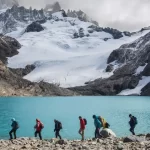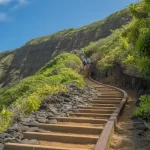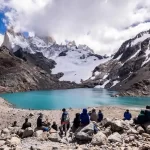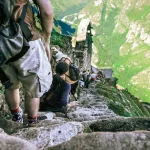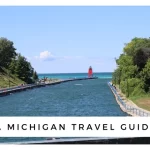Ready to walk in the footsteps of medieval pilgrims? The Camino Primitivo, also known as the Original Way, is the oldest route of the El Camino de Santiago and offers a rugged, breathtaking, and deeply spiritual journey through the heart of northern Spain. Whether you’re craving solitude, scenic beauty, or a challenge, this route could be your perfect path.
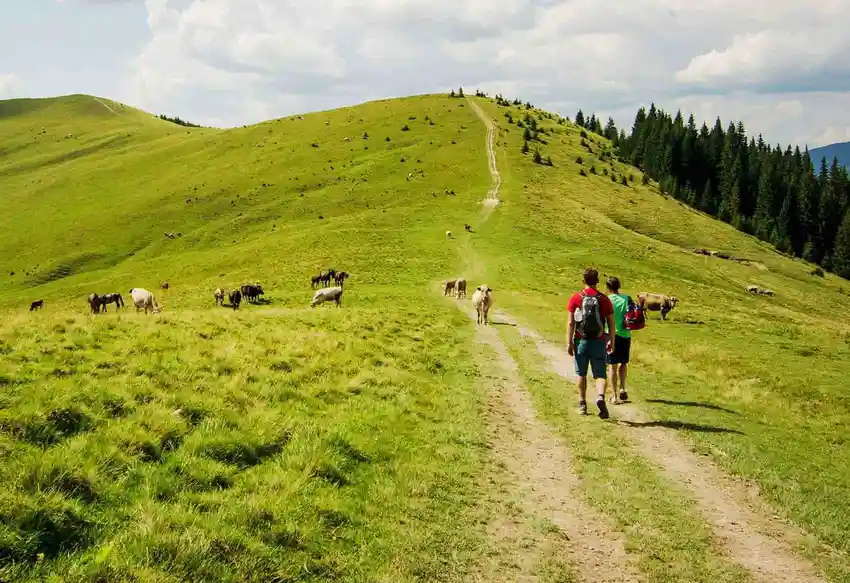
Content
What is the El Camino de Santiago?
The El Camino de Santiago (The Way of St. James) is a legendary network of pilgrimage routes leading to the shrine of the apostle Saint James the Great in Santiago de Compostela, Galicia. For over a thousand years, pilgrims from all over the world have walked these routes, seeking reflection, healing, adventure—or all three.

Among the many trails, the Camino Primitivo stands out for its authenticity and history. It was the first Camino route taken by King Alfonso II in the 9th century. He journeyed from Oviedo to Santiago after hearing of Saint James’s tomb discovery.
Where is the Camino Primitivo?
The Camino begins in Oviedo, the capital of the Asturias region, and winds through the mountains and valleys of Asturias and Galicia before reaching Santiago de Compostela. It’s known for its raw, untamed beauty and peaceful trails, often meandering through forests, medieval towns, and rolling countryside.
The path merges with the Camino Frances in Melide, about 50 miles before the final destination. This fusion allows you to experience both the solitude of the primitivo route camino de Santiago and the vibrant community of other pilgrims on the Frances.
How Long is the Camino Primitivo?
The full Camino distance is approximately 321 kilometers (199 miles). While it’s shorter than some other routes, the terrain makes it one of the most demanding. Expect steep ascents, mountain passes, and remote stretches with few services.
You’ll pass through places like:
- Grado
- Salas
- Tineo
- Poladura
- Grandas de Salime
- Fonsagrada
- Lugo
- Melide
Each village offers a glimpse of Spain’s rich culture, Romanesque architecture, and traditional cuisine.
How Long Does it Take to Hike the Camino Primitivo?
Most pilgrims complete the Camino in 12 to 16 days, depending on their pace, fitness level, and rest days. A common itinerary looks like:

- Day 1: Oviedo to Grado (25 km)
- Day 2: Grado to Salas (22 km)
- Day 3: Salas to Tineo (20 km)
- …
- Final Day: Melide to Santiago (50 km split across two days)
You can shorten or extend your days based on your goals and stamina.
When is the Best Time to Hike the Camino?
The best time to hike the Camino is between May and September. During these months, the weather is more favorable, and the mountain paths are less likely to be slippery or foggy. However, expect cooler temps and rain in the early or late seasons.
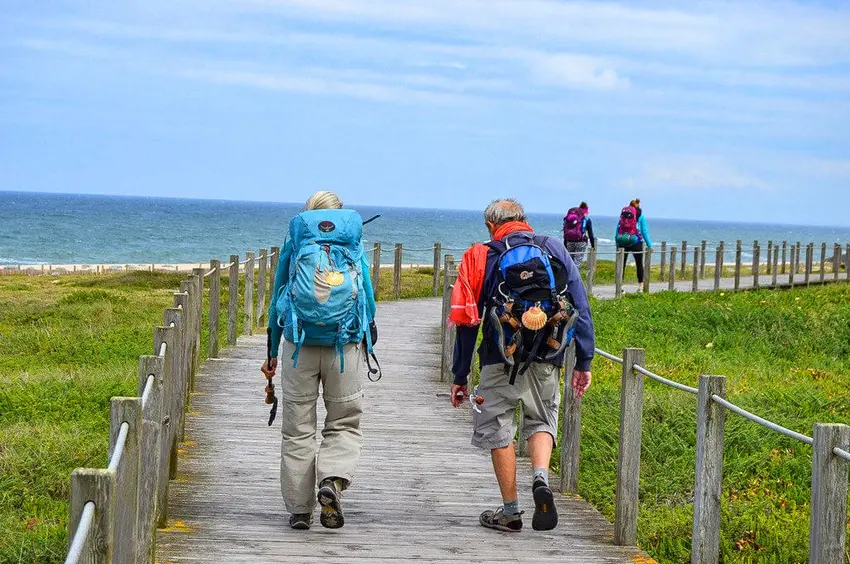
- Spring (May–June): Lush landscapes and fewer crowds.
- Summer (July–August): Warmer weather but more hikers.
- Autumn (September): Colorful foliage, ideal for photography.
Avoid winter unless you are an experienced hiker, as snow and ice can make some sections hazardous.
How Hard is the Camino Primitivo?
Make no mistake—the Camino is hard. It’s widely regarded as the most physically challenging of all the Camino de Santiago routes due to its steep climbs, mountainous terrain, and limited infrastructure in some parts.
Yet, that’s what makes it so rewarding.
Training for the Camino
To prepare, incorporate:
- Hiking with a backpack (at least 6-10 kg)
- Incline training (stair workouts, hill hikes)
- Back-to-back long walks
- Footwear testing (wear your boots well before the trip)
Your legs and lungs will thank you when you’re climbing into Hospitales or trekking along the Puerto del Palo.
Camino Primitivo vs. Other Camino Routes
So how does the Camino Primitivo compare to other routes?
| Route | Distance | Terrain | Crowds | Scenery |
|---|---|---|---|---|
| Camino Frances | ~780 km | Mixed | High | Cultural towns |
| Camino Portugues | ~610 km | Gentle | Medium | Coastal/rural |
| Camino Primitivo | ~321 km | Rugged | Low | Mountainous, wild |
Choose the Primitivo if you want:
- A less commercialized route
- Fewer pilgrims (great for introverts or spiritual seekers)
- Jaw-dropping nature and authenticity
Accommodations
You’ll find a mix of albergues (pilgrim hostels), casas rurales, and guesthouses along the trail. Municipal albergues are affordable and basic, while private ones offer more comfort and amenities like private rooms and meals.
Tip: During summer, book ahead for popular stops like Fonsagrada or Lugo. Off-season? You might have entire dorms to yourself.
Food and Drink on the Trail
Northern Spain is a foodie haven. Along the Camino, you’ll enjoy:
- Fabada Asturiana – a hearty bean and sausage stew
- Sidra (Cider) – a regional favorite, poured from a height
- Pulpo a la Gallega – octopus with paprika and olive oil
- Empanadas – savory pastries perfect for snacks
Don’t worry about packing much food. Every town offers menus del peregrino (pilgrim menus), usually 3 courses for €10–15.
Essential Camino Primitivo Tips
- Pack light. Your bag should be no more than 10% of your body weight.
- Use trekking poles. They help with stability on steep sections.
- Stay hydrated. Water fountains are frequent, but always carry a bottle.
- Get a pilgrim passport. You’ll need it to stay in albergues and to earn your Compostela at the end.
Conclusion: Why Choose the Camino?
The Camino isn’t just a hike—it’s a pilgrimage of the soul. It challenges your body while feeding your spirit with solitude, raw landscapes, and the deep history of the original Camino route.
If you’re looking for authenticity, quiet reflection, and a touch of medieval magic, the primitivo route camino de Santiago is your path.
Camino Primitivo FAQs
Q: Is the Camino Primitivo safe?
Yes! It’s extremely safe for solo travelers, including women. Just follow basic hiking precautions.
Q: Can I bike the Camino?
You can—but it’s not beginner-friendly. Narrow paths and steep terrain make it a tough ride.
Q: What’s the cost of walking the Camino Primitivo?
Budget around €30–50/day, including food and lodging.

An avid traveler, Kirk Grover has been to over 50 countries. He has an extensive background in tourism and hospitality management, along with a degree in Hospitality Management from the University of Nevada Las Vegas. Kirk is very knowledgeable about travel-related topics – they are always up to date on the latest deals for flights, hotels, and other adventures around the world.
